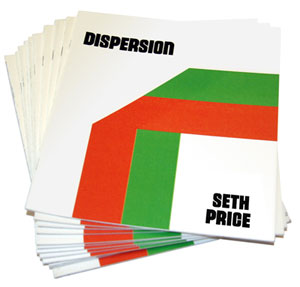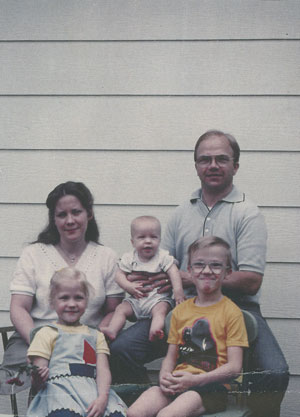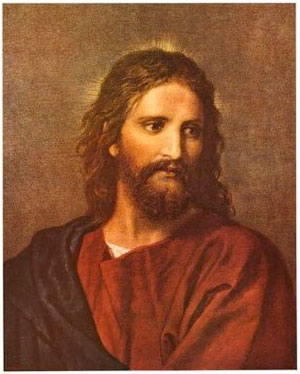I was born and raised in a radical, non-denominational church called The Message of the Hour Church. Its members believe that a man named William Branham was a latter-day prophet through whom God communicated specific messages and interpretations of the Bible. They also believe in an imminent apocalypse and that they alone are God’s chosen people and are called “the bride.” I was told that, like Sodom and Gomorrah, California was so sinful that it would experience an earthquake and snap off the side of the continent. I was taught that the “end-time” would be signaled by massive floods, airplane crashes, and a world leader who would unite the world into a global community.
Since my dad died, I’ve tried to reconcile the conception of the world that I’ve built for myself through philosophy and art with the ideas my family hold to be true. It’s easy to take the benevolent view: that such a misguided belief system is obviously false, but so long as its believers are doing no harm and not imposing their views on anyone else, it’s harmless. But I love my family too much to look at them as misguided fools. And so I’ve tried again and again to find a philosophical place that allows both my atheism and their extreme Christian beliefs to be equally true.
Recently I decided to attend church with my family, for the first time in fifteen years. It was exactly as I remembered: a modest building with a baptismal vitrine behind the altar, a print of Heinrich Hoffman’s Jesus at 33 on one wall and a faded photograph of their prophet on the opposite wall. My grandfather, a cabinet-maker, built the altar before I was born, and as I sat down with my family it was as if no time had passed. The service began with a few members of the congregation playing instruments, and the congregation began to sing hymns. After awhile, the preacher entered from the side, took his place at the pulpit and began to sing along. A few hymns later, he held his hands up, the singing stopped, and the sermon began. The sermon was as ever, completely alien to me. All around me I began to hear members of the congregation shout and whisper their hallelujahs, punctuating the sermon with short bursts of “amen!”
I turned to look at my mom and grandmother and saw that their eyes were tightly shut, with tears streaming down their cheeks. My sister held her hands up, her lips moving, her cheeks wet. Ten years ago, I would have viewed them as the helpless victims of hysteria, and weak minds. I would have felt pity and I would have believed that whatever was happening to them was anything but a spiritual experience. This time was different. As I watched them, their hands held over their heads, their eyes moving rapidly under their eyelids, I was unable to understand, take part, or pass judgment on whatever it was that was happening to them.
A few weeks prior to my church visit, I had a studio visit with a gallery owner. It was one of those sessions that seems to go wrong and convinces you that the person dislikes your work, and so you wait for the phone call either postponing or canceling the show. I’ve had a few of those visits and they usually turn out to be the best ones; the ones that push you into a corner and force you to fight for what you believe in. The questions she asked that put me into one of those panicked states were, “why are you in all of your drawings? Why do you feel that you have to include a literal representation of yourself in almost every piece? Why aren’t you more reflexive? Why don’t you ever step out of the work and refer back to your practice in drawings that are a little more distanced, a little more neutral?”
I’ve always had lots of answers to those questions but that day none of them seemed adequate. The next day I took her to the airport, her questions banging around my brain in her rapid-fire New York accent.
After seeing my family in their church, I’ve become convinced that as an artist I cannot access or pass judgment on any experience but my own. I’ve always been skeptical of ideas about shared cultural memories having a determinative influence over who we are, because while I believe people do share lots of things, I also believe the deeper you focus the microscope, the more different we all become—and that is the level of experience that interests me.
I am interested in that place where every cultural object or event is connected to an individual, idiosyncratic experience. Every time I see a bag of Corn-Nuts I remember that it was one of the few things I knew my dad liked. I would buy him big bags of Corn-Nuts for his birthday. I think of this and then I think of how much I didn’t know about my dad. I wonder why he didn’t talk to me more, what he was like before religion came into his life… and down the rabbit hole I go alone. Thinking like this allows me to look at a world awash in consumer bullshit like Corn-Nuts and still hold on to a view of life as unique, special, and ultimately secret. I try to imagine now that the preacher’s words at my family’s church did something similar to each member of the congregation; that the sermon, useless to me, triggered something different, unique, and genuine in every person there.

Thinking back to the gallery owner’s questions, I remember why I depict myself so often. I do it because the world represented in my work is mine alone. By placing a representation of myself in a drawing, I’m reaffirming, at least to myself, that what I’m depicting is only true and can only exist through my presence. I admit I’ve put a lot of stock in the clichéd notion of the artist as an isolated individual expressing himself. As a phenomenological atheist, it’s hard for me to admit that I occupy a conservative space in the art world: I don’t believe that art is a politically functional tool and I believe that most artists who build their work in a theoretical way around essentially political concerns like social inequities and commodification are usually playing catch-up to the larger cultural movements manifested in popular music, film, television, video games and online shopping. South Park is a more effective tool for creating awareness of controversial political and social issues than anything in the ’08 Whitney Biennial; legally downloading Radiohead’s new album for free seems a more effective illustration of commodity-free distribution than Seth Price’s dry multi-media essay Dispersion. Political concerns only become effective in art when they appear obliquely, wrapped in a narrative that first tries to seduce or entertain.
The pragmatist philosopher Richard Rorty has said that the only use he sees for art is to empathetically illuminate the realities of the other, to help someone relate in some way to a life or an existence that isn’t their own. The only way people have found to do this is to tell their stories to others. Science, politics, art, and religion are all stories we tell ourselves to help us live in the world. Stories are never true or false. Their value is determined by their usefulness to particular people in particular places. Politics is generally involved in creating stories that are the most useful for governing the greatest number of people, and to do this, politicians try to communicate specific ideas to their constituencies, ideas that are clear, defined and fully formed.
Art is involved in something very different. The point of the kind of stories that art tells is to produce certain effects, not to convey messages. When art becomes political, believing that it can effect real change, it risks losing its subjective power and becoming just another club in the political arsenal. Ironically, it seems as if art can only have political power when it gives up the idea that it can make any difference or tell any truth and embraces itself as a subjective tool of self-expression. To me, raised in the religious world that I was, this seems similar to the Christian idea that you can only be saved when you give up control and submit to the power of God. Thomas Wolfe wrote that you can’t go home again but I’ve found that I’ve never been able to leave. I don’t believe I can communicate much of anything through my art. The most that I can hope for is that I tell my story honestly and well enough to entertain someone and maybe help push them down their own rabbit hole.
________________
Michael Bise is an artist living in Houston.




